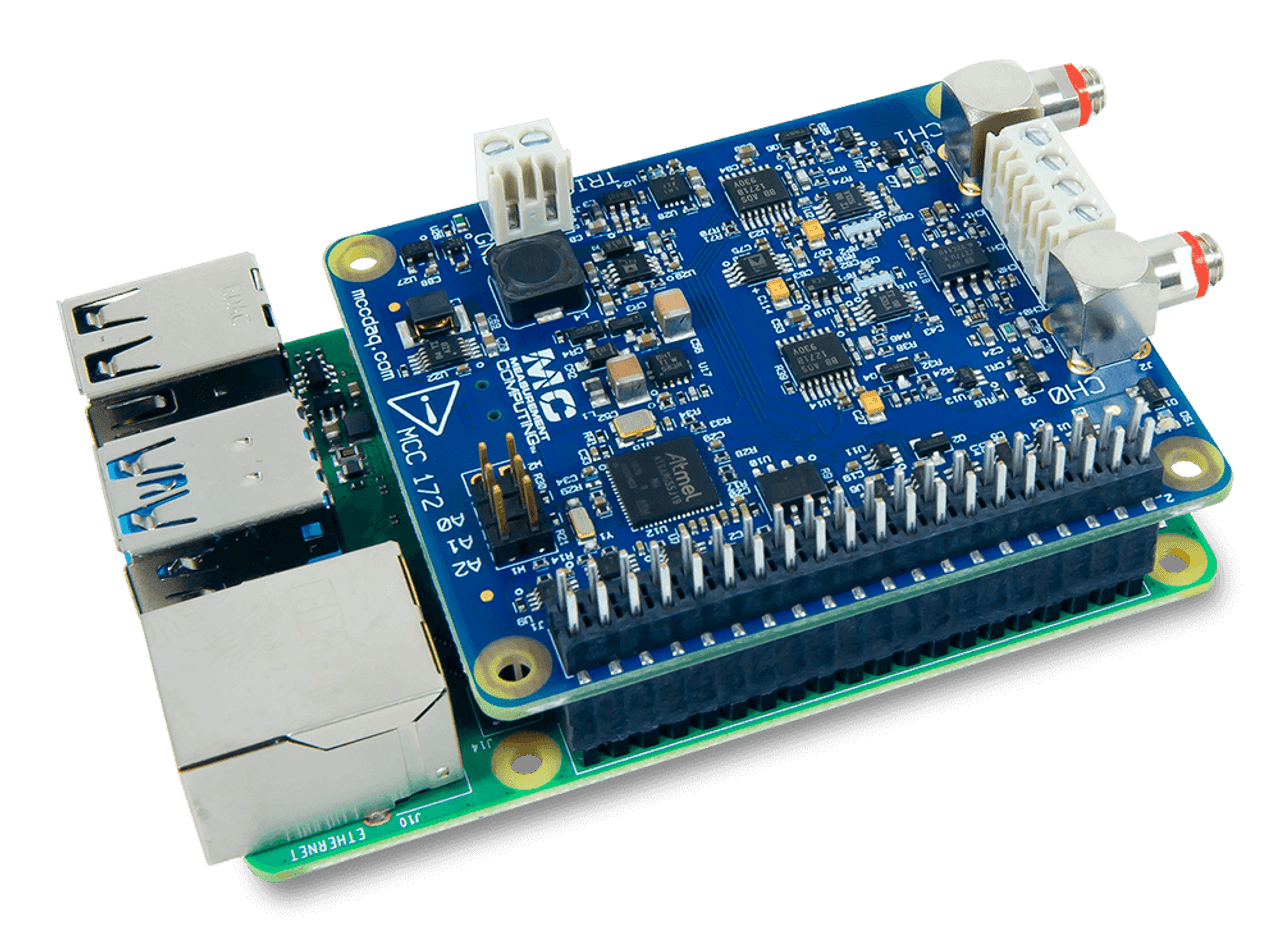Sound & Vibration
How are sound and vibration measured? Sound and vibration data acquisition devices are utilized for capturing, analyzing, and understanding the acoustic and mechanical behavior of various systems and environments. Vibration measurement instruments serve a wide range of purposes across multiple industries and applications, from automotive, manufacturing, environmental monitoring, and research and development. Vibration measurements and trends can be used as an indication of machine health, and accurately measuring vibration using an accelerometer or other vibration sensor can help predict machine failure and schedule maintenance.
When selecting a DAQ device for sound and vibration measurement, factors such as the number of input channels, sampling rate, resolution, compatibility with sensors, software support, and budget constraints are crucial. Digilent and Measurement Computing offers solutions to directly measure IEPE-type vibration sensors, accelerometers or voltage inputs with no added signal conditioning using USB data acquisition (DAQ) devices.
From a convenient Raspberry Pi DAQ HAT with Intergrated Electronics Piezo-Electric (IEPE) measurement to our standalone WebDAQ 504 vibration logger, there are plenty of options to fit your sound and vibration measurement equipment needs!


Internet Enabled Vibration-Acoustic Data Logger
- Four simultaneous IEPE inputs
- 24-bit A/D converter
- Up to 51 kS/s/ch sample rate
- Real-time FFTs for continuous monitoring and analysis
- Log data to internal storage or mapped network storage
- Internal 3GB memory - optional SD card, and USB slots
- Cold junction compensation



